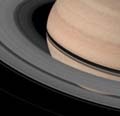|
Jim Blinn
–
computer graphics researcher
|

|
"
This bouncing back and forth between left–brain and right–brain thinking often happened on very rapid cycle and was pretty exhausting.
" |
 |
| |
|
|
|
| |
How were you motivated to choose your particular field? |
| |
I come from an artistic family but I never developed conventional drawing skills. Instead I was fascinated by mathematics, in particular the relation between algebraic mathematical equations and the shapes they could generate when plotted. When I discovered that computers could be used to calculate and draw the results of these equations I was hooked. I could now draw pictures mathematically without needing pencil and paper. In addition, I was very excited by some of the educational films I saw when on TV when I was in elementary school, in particular the films made with funding from the Bell Telephone company. These used animation to illustrate scientific principles and I wanted to do more of this.
I tried making simple animations in high school with paper cutouts but it was too hard. Again, when I discovered computer graphics in college it seemed a natural to use it to produce the animations I had imagined but could not produce with conventional tools. Finally, I had always been interested in space exploration but never pursued that as a real career. When I got to JPL all these interests and skills came together to make the Voyager fly by animations. I wanted to make each frame of the movies look like a Chesley Bonestell painting. I'm not sure I succeeded, but the motion of the animation adds its own dimension of interest to the images.
|
|

|
| |
|
|
|
| |
What can you share about your creative process? |
| |

|
|
I worked in a very unique time. Computer graphics was just barely possible at the scale necessary to produce animations. Hardware was available but no off–the–shelf software. I needed to write my own programs to do the animation and rendering as well as learn enough about image design to make artistic decisions about the frames. This bouncing back and forth between left–brain and right–brain thinking often happened on very rapid cycle and was pretty exhausting. Nowadays, people are more specialized. People who write computer graphics programs often do not do a lot of animation. People who do animation often use commercial animation software.
|
|
| |
|
|
|
| |
What ideas do you have for a future human community on Mars?
|
| |
The experience of JPL with the Mars Pathfinder mission and its display on the World Wide Web opens an interesting possibility for employment of colonists on Mars. They can become electronic tour guides for people visiting mars from Earth via the Web. They would explore and photograph interesting areas of Mars and put up web sites to show off their discoveries. They could also build and maintain exploratory robots that would be refinements of the Pathfinder rover. Earthlings could then rent time on these robots to do their own exploration from the comfort of their Earthbound living rooms.
|
|

|
|




